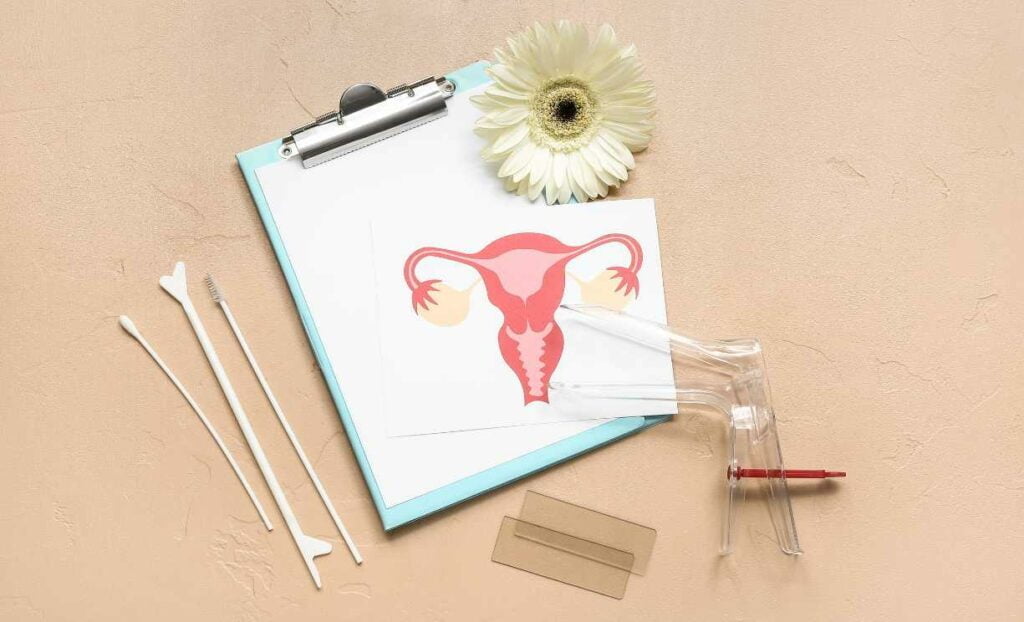As women age, hormonal changes can bring about a variety of shifts in their bodies. One often overlooked aspect is vaginal health, and one condition that may arise is vaginal atrophy. In this blog, we will delve into the intricacies of the diagnosis of vaginal atrophy, shedding light on the signs, symptoms, and diagnostic processes involved.
Contents
Understanding Vaginal Atrophy
Vaginal atrophy, in simple terms, refers to changes that can occur in a woman’s vagina due to a decrease in estrogen levels, often associated with factors like menopause or hormonal fluctuations. When estrogen levels decline, the vaginal tissues may become thinner, drier, and less elastic. This can lead to various uncomfortable symptoms, such as dryness, itching, and pain during sexual intercourse.
Essentially, vaginal atrophy is a condition where the vaginal walls undergo changes that impact overall vaginal health. Recognizing its signs, including discomfort and changes in sexual function, is crucial for seeking timely medical attention and exploring appropriate treatments to address these changes and enhance comfort and well-being.
Causes Of Vaginal Atrophy
Vaginal atrophy, also known as atrophic vaginitis, is primarily caused by a decline in estrogen levels, particularly during menopause. Estrogen plays a crucial role in maintaining the health and functionality of the vaginal tissues. As estrogen levels decrease, various changes occur in the vagina, leading to the symptoms associated with vaginal atrophy. Here are the primary causes:
- Menopause: The most common cause of vaginal atrophy is the natural decline in estrogen levels that occurs during menopause. Menopause typically occurs around the age of 50, and the decrease in estrogen can result in changes to the vaginal tissues.
- Perimenopause: Perimenopause is the transitional phase leading up to menopause, during which estrogen levels begin to fluctuate. Vaginal atrophy can start during this phase, and symptoms may persist after menopause.
- Surgical Menopause: Surgical removal of the ovaries (oophorectomy) or certain cancer treatments that impact ovarian function can induce sudden and significant decreases in estrogen levels.
- Breastfeeding: During breastfeeding, estrogen levels may be lower, potentially contributing to vaginal dryness and atrophy. However, symptoms often improve once breastfeeding is complete.
- Certain Medications: Medications that interfere with estrogen production or activity, such as certain hormonal treatments for breast cancer or anti-estrogen medications, can contribute to vaginal atrophy.
- Hormonal Changes: Other hormonal changes unrelated to menopause, such as those associated with hormonal birth control or fertility treatments, may also impact vaginal health.
- Smoking: Smoking has been associated with an increased risk of developing vaginal atrophy. The chemicals in tobacco can have negative effects on blood circulation and may impact estrogen levels.
- Genetic Factors: Some individuals may be genetically predisposed to experiencing symptoms of vaginal atrophy earlier or more severely than others.
- Pelvic Radiation Therapy: Radiation therapy to the pelvic area, often used in the treatment of certain cancers, can damage the vaginal tissues and lead to atrophy.
Signs And Symptoms Of Vaginal Atrophy
Vaginal atrophy, resulting from a decline in estrogen levels, can manifest through a range of signs and symptoms. It’s important to recognize these indications for timely medical intervention. Common signs and symptoms of vaginal atrophy include:
- Vaginal Dryness: One of the primary symptoms is a noticeable reduction in natural vaginal lubrication, leading to dryness and discomfort.
- Itching and Irritation: Women with vaginal atrophy may experience itching and irritation in the vaginal area, contributing to a sense of discomfort.
- Burning Sensations: A sensation of burning, particularly during urination or intercourse, can be indicative of the thinning and inflammation of vaginal tissues.
- Pain or Discomfort During Intercourse: Vaginal atrophy often leads to a decrease in elasticity and lubrication, resulting in pain or discomfort during sexual intercourse.
- Vaginal Thinning: Thinning of the vaginal walls is a key characteristic of atrophy. This can contribute to a feeling of fragility in the vaginal tissues.
- Urinary Symptoms: Changes in the urinary tract may occur, including increased frequency or urgency of urination. Some women may also experience recurrent urinary tract infections.
- Vaginal Bleeding: In some cases, vaginal atrophy may cause light bleeding, especially after sexual activity or during a pelvic examination.
- Shortening of Vaginal Canal: The vaginal canal may become shorter and narrower, contributing to discomfort and impacting sexual function.
- Changes in pH Levels: Vaginal pH levels may increase, leading to an imbalance in acidity. This can contribute to an environment conducive to infections.
- Decreased Libido: Changes in vaginal health can affect sexual desire and arousal, impacting overall sexual well-being.
Diagnosis Of Vaginal Atrophy
Diagnosis of vaginal atrophy involves a thorough evaluation by healthcare professionals to understand the individual’s symptoms and assess the health of the vaginal tissues. Here’s a step-by-step overview of the diagnostic process:
- Medical History: The process begins with a detailed discussion of the individual’s medical history. Healthcare providers inquire about symptoms, their onset, and any relevant gynecological or medical conditions. This information provides context for understanding the concerns related to vaginal health.
- Symptom Assessment: A comprehensive review of symptoms is conducted, covering aspects such as vaginal dryness, itching, pain during intercourse, and urinary symptoms. Open communication about the nature and impact of these symptoms helps healthcare providers form a preliminary assessment.
- Physical Examination: A pelvic examination is performed to assess the health of the vaginal and pelvic tissues. This includes an examination of the vaginal walls for signs of thinning, dryness, and inflammation. The examination helps healthcare professionals identify physical changes associated with vaginal atrophy.
- Vaginal pH Testing: Vaginal pH testing is often conducted to assess acidity levels. Vaginal atrophy can lead to increased alkalinity, and pH testing provides additional diagnostic information. An elevated pH level supports the diagnosis of hormonal imbalances.
- Blood Tests: Blood tests, particularly measuring hormone levels such as estrogen, are crucial in the diagnosis of vaginal atrophy. Reduced estrogen levels are a key factor contributing to the condition, and blood tests confirm hormonal imbalances.
- Biopsy (if necessary): In certain cases where there is uncertainty or concerns about other potential issues, a biopsy of the vaginal tissues may be recommended. This involves taking a small sample of tissue for microscopic examination, helping to rule out other conditions.
- Urinary Assessment: Given the connection between vaginal atrophy and urinary symptoms, a urinary assessment may be conducted. This evaluates changes in urinary function and helps exclude other urinary tract issues.
Treatment For Vaginal Atrophy
The treatment for vaginal atrophy aims to alleviate symptoms, improve vaginal health, and enhance overall well-being. Here are common approaches to managing vaginal atrophy:
- Hormone Replacement Therapy (HRT): HRT is a common and effective treatment for vaginal atrophy. Estrogen therapy, administered either topically or systemically (oral or transdermal estrogen), helps restore estrogen levels and improve the health of vaginal tissues.
- Non-Hormonal Moisturizers and Lubricants: Non-hormonal vaginal moisturizers and lubricants can provide relief from vaginal dryness and discomfort. These products are available over-the-counter and can be used regularly to maintain vaginal moisture.
- Vaginal Estrogen: In addition to systemic estrogen therapy, healthcare providers may prescribe localized estrogen treatments directly applied to the vagina. These can include creams, tablets, or rings, delivering estrogen specifically to the vaginal tissues.
- Osphena (Ospemifene): Osphena is a medication that acts like estrogen in the vaginal tissues. It is an oral medication that may be prescribed to alleviate symptoms of painful intercourse.
- Lifestyle Modifications: Certain lifestyle changes can contribute to vaginal health. These include staying hydrated, maintaining a healthy diet rich in vitamins and minerals, and avoiding irritants such as harsh soaps and douches.
- Regular Sexual Activity: Regular sexual activity, if comfortable, can help maintain vaginal elasticity and blood flow. It can also contribute to natural lubrication.
- Pelvic Floor Exercises: Pelvic floor exercises, often referred to as Kegel exercises, can help strengthen the pelvic muscles, supporting vaginal health and potentially improving symptoms.
- Dilator Therapy: For individuals experiencing narrowing or shortening of the vaginal canal, healthcare providers may recommend dilator therapy. This involves using graduated dilators to gently stretch and maintain the flexibility of the vaginal tissues.
- Counseling and Support: Vaginal atrophy can impact an individual’s emotional and sexual well-being. Counseling or support groups may provide valuable assistance in coping with the emotional aspects of the condition.
Conclusion
In conclusion, navigating the diagnosis of vaginal atrophy is a pivotal step toward reclaiming comfort and well-being for women experiencing the impact of hormonal changes. Understanding the signs and symptoms, coupled with an open dialogue with healthcare professionals, forms the foundation of an accurate diagnosis. The diagnostic journey involves a thorough examination of medical history, a detailed symptom review, a pelvic examination, and potentially additional tests like vaginal pH testing and blood work.
By fostering a supportive environment and encouraging proactive healthcare, we can empower women to take charge of their vaginal health and embrace a life free from the discomfort of vaginal atrophy.





